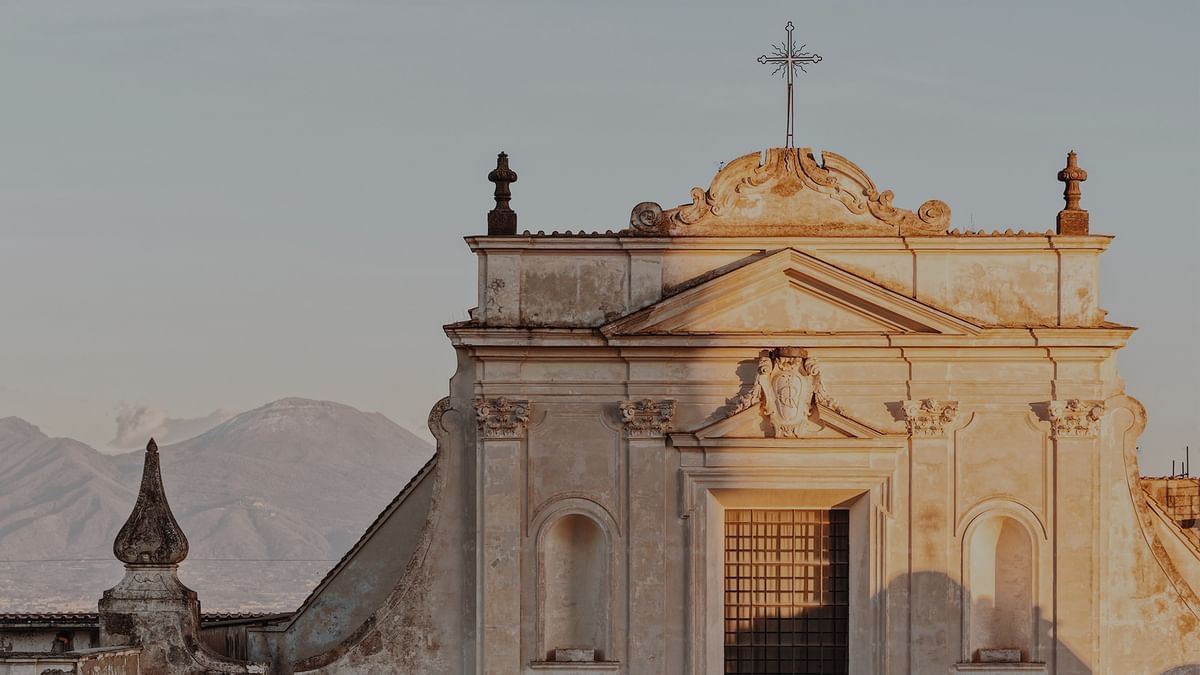Art is back! Here’s a selection of the most famous museums in Naples that are open to the public again.
12 Oct 2020
Gruppo UNA
Let’s discover Naples: a city blessed with priceless treasures and an amazing artistic heritage in its wonderful art museums.
MADRE
MADRE is the Naples museum of contemporary art. Located in the historical town centre, Portuguese architect Alvaro Siza has transformed the old Donnaregina palace into a splendid, functional modern space for contemporary art.
In the hidden heart of Naples, where the soul of the city is at its most resonant, a stone’s throw from the Cathedral and the Treasure of San Gennaro, and a hundred metres from the Archaeological Museum, MADRE Museum has re-cast the tourist attractions in a neighborhood oozing social values and cultural heritage just waiting to be rediscovered.
The first floor of the museum has works on permanent show by Clemente, Lewitt, Long, Bianchi, Fabro, Koons, Paladino, Kounellis, Horn, Paolini and Serra; the second floor exhibition pathway maps out the most significant artistic and stylistic developments between the late Fifties and early Nineties.
Mann - Museo Archeologico Nazionale di Napoli
The National Archaeological Museum of Naples is home to one of the world’s most extraordinary collections of antiquities and one of the most important historical collections in Italian and Western cultural history. Highlights include the Farnese gem and sculptures collection (a legacy of the Bourbons); the treasures of Herculaneum and Pompeii, including an unparalleled set of frescoes and mosaics, statues, precious and everyday objects; famous collections and new installations such as the Medagliere, and the famous Secret Cabinet, a collection of “obscene” artefacts documenting ancient erotic customs.


Museo e Real Bosco di Capodimonte
Built by the Bourbons around the Farnese collection starting in 1738, the Royal Palace of Capodimonte features extraordinary masterpieces by Titian, Parmigianino, Carracci and a wealth of decorative arts.
Over the following centuries, the museum enriched its collections with major works from Neapolitan and southern churches (Simone Martini, Colantonio, Caravaggio), and prestigious acquisitions, sometimes of entire collections (Borgia, d’Avalos).
Right next to the Farnese collection, the Royal Apartment showcases Bourbon artefacts, including a famous porcelain collection. Last but by no means least, the Neapolitan Gallery is filled with nineteenth-century and contemporary works of art.
Museo Duca di Martina
Ferdinand I of Bourbon purchased this splendid estate on the Vomero hill as a summer residence for Lucia Migliaccio, the Duchess of Floridia. Known as the Floridiana, the refined, neoclassical villa was later renovated by Tuscan-born architect Antonio Piccolini.
The Italian State purchased the residence and gardens in 1919. Since 1927, it has housed the Duca di Martina Ceramics Museum, one of the world’s most prestigious collections of European and Oriental decorative art.
Formerly owned by Placido de Sangro, Duke of Martina, the collection features around six thousand objects of “minor” artistic output, including furniture, glass, ivory, amber, lacquer, coral, enamel, and – especially – porcelain and majolica.

Museo Pignatelli Cortes
This is a rare example of a House Museum, in which all of the museum’s items are still in their original locations, dotted around a princely residence that displays the taste and prestige of the aristocratic families who lived there: the Actons, Rothschilds and Pignatellis.
A harmonious, elegant specimen of Neapolitan neoclassical architecture, the Villa was designed by Pietro Valente in 1826. The Museum first opened its doors in 1955, after Princess Rosina Pignatelli donated the gardens and stately home, including all of its furniture, furnishings and collections, to the Italian State.
The Museum showcases the Pignatelli’s collecting interests in the applied arts, displaying furnishings, items of nineteenth-century furniture, silver objects, gilded bronze furnishings, small bronzes and porcelain from various manufacturers.
Also on show is the Banco di Napoli’s art collection, with treasures from the sixteenth to nineteenth centuries and, in a pavilion at the end of the Garden, the Museum of Carriages.

Where to stay in Naples.
Whether it’s for a weekend or a longer stay to discover the beauties of Naples, UNAHOTELS Napoli will suit you down to the ground. Located close to the Central Station, the old town and the subway network, the hotel is in a historic building that is perfectly located for getting around town or striking out to visit the surrounding areas. Even on a brief stay, it’s always worth sampling Naples’ unique atmosphere.


